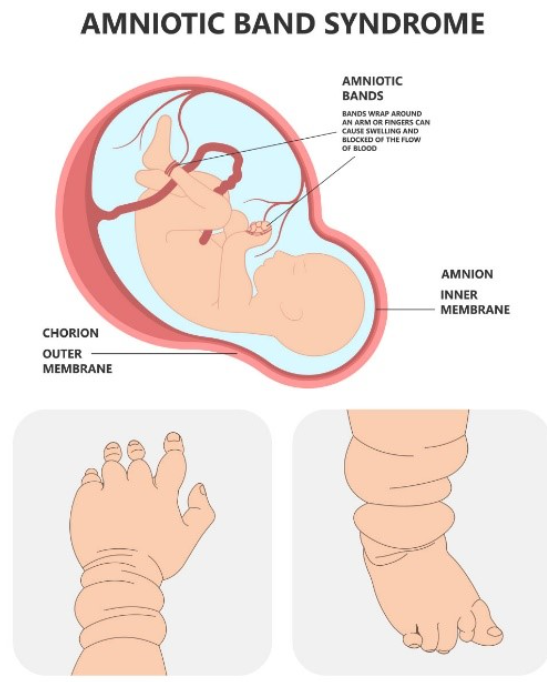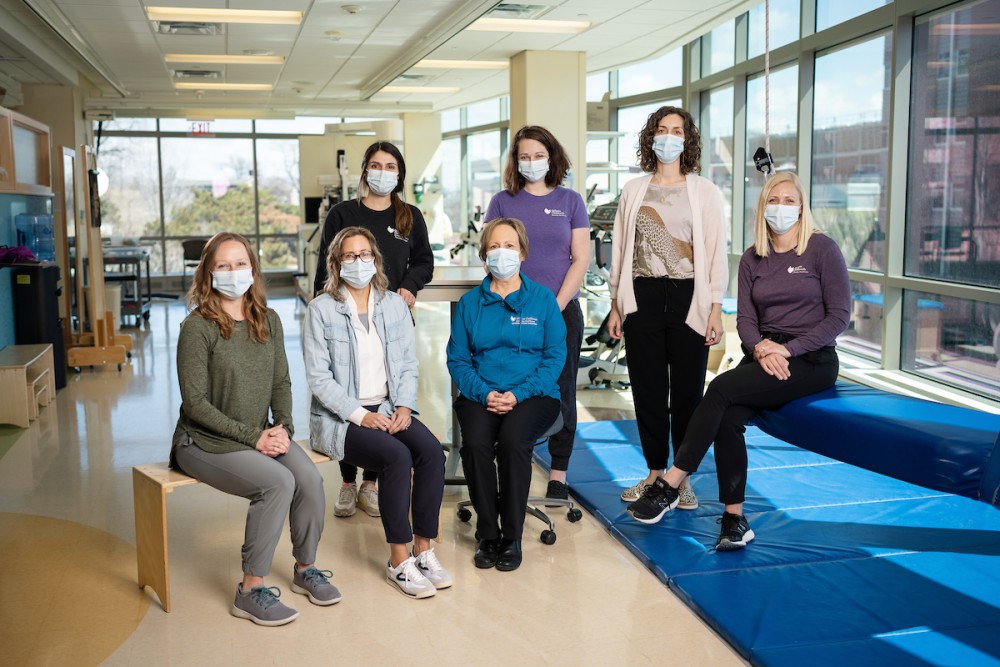Amniotic Band Syndrome (ABS) is a rare condition that is not familiar to many, but the experts at Gillette Children's have resources to help. To treat and monitor an amniotic band we first need to understand what it is. Amniotic Band Syndrome (ABS) occurs when a fetus becomes entangled in fibrous, a string-like strand called amniotic bands.
While in the womb as the fetus continues to grow, some of their bands will not grow with them. This causes their blood flow to get blocked and disrupts continued growth and development.
In some cases, some of the strands could be wrapped too tight. This can cause severe deformities to the face, arms, fingers, legs and toes. In the most severe cases, it can be fatal.
Gillette can help you understand the causes, symptoms and effects of amniotic band syndrome. Most importantly, we can explain how we treat and monitor the condition.
Understanding the common symptoms associated with ABS
Although we are unsure what causes ABS, it typically happens when the lining of the amniotic sac is damaged during pregnancy. Most healthcare providers and researchers do not think ABS is genetic. It is a rare condition where no two cases are exactly alike.
The symptoms and effects are dependent on where the bands restrict the blood flow and the fetus during development. Some symptoms may include:
- Cleft lip or palate if a band wraps around your infant’s face
- Missing limb or part of limb
- Physical defects on the stomach or chest
- Permanent mark or indentation on your infant’s finger, arm, leg or toe

Sometimes your healthcare provider at Gillette can diagnose Amniotic Bands in a prenatal ultrasound because we are able to see any visual abnormalities in the womb. However, if the Amniotic band develops later in the womb, the condition won’t be diagnosed until birth.
How is ABS treated?
If your child has amniotic band syndrome, Gillette has the tools and resources to help with current treatment and other options.
Depending on the severity of the condition, your child might need surgery to release the constricting bands. The surgery depends on the location of the band, the number of bands and how deeply constricted the infant's tissues are. Surgery may occur right at birth or might not happen until your child is older.
If the Amniotic Band affects the face and results in a cleft palate, Gillette has specialists in craniofacial and plastic surgery. They might need to perform reconstructive surgery to repair the cleft.
Physical therapy and occupational therapy are other treatments that help children increase strength and improve function.
If your child loses an entire limb because of Amniotic band syndrome, they might need a prosthesis. Most children begin using one at 12 to 18 months (about 1 and a half years), or when they start walking.
Our team is here to help
There are sometimes Amniotic bands that are mild and do not require treatment. To get the most efficient care for your child, Gillette can help. We have specialists in assistive technology, Craniofacial and plastic surgery, occupational therapy and physical therapy.
At Gillette, we want the best for you and your child. With our technology and our amazing staff, we will continue to educate, provide and help you determine what is best for your family.

 Home Page
Home Page

